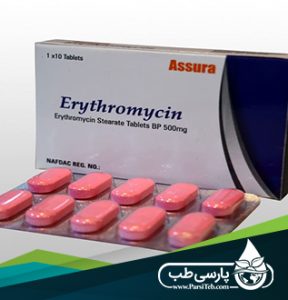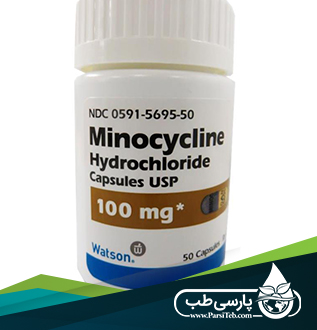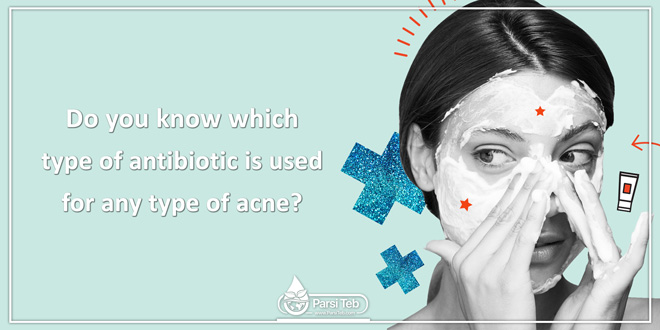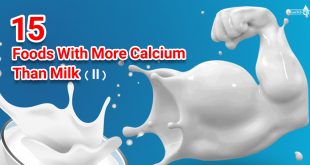Why are antibiotics used for acne? Do different antibiotics work for different types of acne symptoms? How do people with acne and their dermatologists choose the right drug?
Antibiotics are frequently used to treat acne since they help decrease the number of bacteria in and around the pilosebaceous unit, consisting of a hair follicle, sebaceous gland, and a hair. Acne is caused by the effects of hormones on this unit.
Specifically, the follicle becomes obstructed and an overgrowth of a normal skin bacteria, Propionibacterium acnes, causes the destruction of the lining of the follicle. This process allows the follicular material to enter the dermis, causing an inflammatory response.
How They Work
Antibiotics work by several mechanisms. The most important mechanism is the decrease in the number of bacteria in and around the follicle. Antibiotics also work by reducing the irritating chemicals produced by white blood cells. Finally, antibiotics reduce the concentration of free fatty acids in the sebum, also reducing the inflammatory response.
Types
The most frequently used antibiotics for acne are summarized here.
Tetracycline
- Tetracycline is the most widely prescribed antibiotic for acne.
- The usual starting dose is 500 mg twice a day continued until a significant decrease in acne lesions is seen.
- The dose can then be decreased to 250 mg twice a day or discontinued.
- The main drawback for this antibiotic is that it must be taken on an empty stomach to be the most effective.
- Tetracycline should not be given to pregnant women or children under nine years of age.

Erythromycin
- Erythromycin is a very commonly used antibiotic for acne.
- It has several advantages over tetracycline.
- First, it has anti-inflammatory properties that help reduce redness in lesions in addition to killing bacteria.
- Also, it can and should be taken with food—a benefit for teenagers.
- The dosage of erythromycin varies with the type used, but it is typically prescribed as 250 – 500 mg twice a day.

Minocycline
- minocycline is a tetracycline derivative that has been used effectively for decades as a treatment for acne.
- It is especially useful for pustular type acne.
- While the absorption of minocycline is decreased with food, it is not as significant as the decrease seen with tetracycline.
- The usual starting dose is 50 to 100 mg twice a day.
- Major side effects of minocycline include dizziness, nausea, vomiting, skin pigmentation changes, and tooth discoloration.
- The skin and tooth changes are seen more often in people who have taken minocycline for a long time.
Doxycycline
- Doxycycline is often used for people who do not respond to or cannot tolerate erythromycin or tetracycline, or for those who will likely have difficulty with the “no food” guidelines of tetracycline (such as teenage boys.)
- The dosage of doxycycline is started at 50 to 100 mg twice a day.
- It should be taken with food, otherwise, it can cause significant nausea.
- Doxycycline is more likely than tetracycline to increase sensitivity to the sun or cause sunburns, a phenomenon known as photosensitivity.
- There are other acne medications which may cause photosensitivity as well, such as benzoyl peroxide, alpha hydroxy acids, and topical retinoids.
- Doxycycline is available under these brand names: Doryx, Oracea, Monodox, Atridox, Morgidox, Vibra-Tabs, Alodox, Ocudox, Doxy, Acticlate, and Vibramycin.
Other Antibiotics: Septra/Bactrim and Macrolides
- Septra or Bactrim (sulfamethoxazole/trimethoprim) and Zithromax (azithromycin) a macrolide, have often been used to treat moderate to severe inflammatory acne.
- Recent studies do not seem to favor one antibiotic over another with this condition, but treatment appears to work much better when combined with topical therapy.
- Allergic reactions (“sulfa allergy”) are fairly common with sulfanomides and significant resistance has been seen with both of these categories of antibiotics.
Side Effects
- All antibiotics can cause vaginal yeast infections in women.
- Tetracycline seems to be the antibiotic that most frequently has this side effect.
- All oral antibiotics can also lessen the effectiveness of birth control pills, so those who are taking these antibiotics should use a back up birth control method.
- Nausea is fairly common with erythromycin and doxycycline. It’s important to talk to your dermatologist about any potential side effects as well as when you should call with any symptoms.
- Nausea is fairly common with erythromycin and doxycycline. It’s important to talk to your dermatologist about any potential side effects as well as when you should call with any symptoms.
Reference : verywellhealth
Collected by : Dr. Afsaneh Amin Ghafouri
 Parsi Teb Physical and Mental Health Journal
Parsi Teb Physical and Mental Health Journal 




